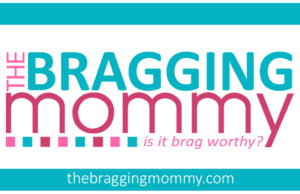Breastfeeding and pumping can be incredibly rewarding, but they can also bring challenges. One concern many mothers face is whether pumping can cause damage to breast tissue and how to identify if this is happening. Understanding the signs of breast tissue damage from pumping is crucial to protect your comfort and breastfeeding journey.

In this article, we will explore whether pumping can harm breast tissue, why breast pain occurs, how to prevent injury, and when to seek professional help. We also provide practical tips to help you pump effectively and comfortably.
Can Pumping Damage Breast Tissue?
Pumping is generally safe when done properly; however, improper use of breast pumps or extended pumping sessions can sometimes lead to breast tissue damage. This damage can result from excessive suction, incorrect flange size, or poor technique, potentially causing pain, bruising, swelling, or even tissue trauma.
While the majority of pumping experiences are positive, recognizing early signs of tissue damage is important to prevent long-term issues such as blocked ducts, mastitis, or reduced milk supply.
How Pumping Works
Breast pumps mimic a baby’s suckling action to express milk. The device creates suction to pull milk from the milk ducts through the nipple and into a collection bottle. Proper pumping requires the right suction level and flange size tailored to your breast anatomy.
When used correctly, pumping stimulates milk flow without causing pain or tissue injury. However, if the suction is too high or the flange does not fit well, it can lead to nipple trauma and damage deeper breast tissue.
Is It Normal to Experience Breast Pain After Pumping?
Mild discomfort or tenderness can be common after pumping, especially for new pumpers adjusting to the process. However, persistent or sharp pain is not normal and may indicate an underlying problem such as tissue damage, infection, or poor pump settings.
Paying attention to pain patterns, intensity, and duration can help you differentiate normal soreness from something more serious.
What Causes Breast Pain After Pumping?
Several factors can contribute to breast pain after pumping:
- Incorrect flange size: Too small or too large flanges can cause nipple chafing or bruising.
- Excessive suction: High suction levels may damage sensitive tissue.
- Prolonged pumping sessions: Pumping for too long without breaks can strain breast tissue.
- Poor pump maintenance: Worn-out or damaged parts can affect suction consistency.
- Improper positioning: Incorrect breast or pump placement can cause uneven pressure and discomfort.
If you experience ongoing pain, checking your pump’s settings and parts can often resolve the issue. For troubleshooting tips, consult resources like Breast Pumping Not Working.
Should I Stop Pumping if I Have Breast Pain?
Mild pain might not require stopping pumping but adjusting your technique, suction, or flange size. However, if the pain is severe, persists, or you notice signs of tissue damage such as bruising, bleeding, or lumps, it is advisable to pause pumping and seek medical advice.
In some cases, switching to a wearable breast pump that offers customizable settings and gentle suction can improve comfort.
How Long Does Breast Pain Last After Pumping?
Mild breast soreness or tenderness after pumping is common and usually goes away within a few hours as your body adjusts to the suction. Most women find that any discomfort lessens within 2 to 3 hours after finishing a session.
If the pain lasts longer than 24 hours, gets worse, or is sharp and persistent, it might indicate a problem such as tissue damage, a blocked duct, or infection. In these cases, it’s important to consult a lactation consultant or healthcare provider to avoid further complications.
Keeping an eye on how long the pain lasts can help you know when to seek professional advice and ensure your pumping routine stays safe and comfortable.
How Can I Help Prevent Breast Pain Before Pumping?
Preventive measures can reduce the risk of breast tissue damage:
- Ensure the pump flange fits correctly to avoid nipple trauma.
- Start pumping at low suction and gradually increase to a comfortable level.
- Limit pumping sessions to 15-20 minutes per breast unless otherwise advised.
- Regularly inspect your breast pump and replace worn-out parts with breast pump replacement components to maintain optimal function.
- Stay hydrated and well-nourished to support breast health.
How Can I Relieve Breast Pain During or After Pumping?
If you experience pain, try these strategies:
- Apply warm compresses before pumping to improve milk flow and soften breast tissue.
- Use cold compresses after pumping to reduce swelling and discomfort.
- Massage the breasts gently to relieve blocked ducts.
- Adjust the pump settings or flange size as needed.
- Take over-the-counter pain relief if approved by your healthcare provider.
When to Seek Professional Advice
Seek medical or lactation consultant support if you experience:
- Persistent or severe breast pain.
- Nipple cracking, bleeding, or bruising.
- Signs of infection like redness, warmth, fever, or lumps.
- Difficulty expressing milk or sudden decrease in supply.
Early intervention can prevent complications like mastitis or abscess formation.
FAQs
- How do you know if you have damaged breast tissue?
Symptoms include persistent pain, bruising, lumps, nipple trauma, and sometimes bleeding. If symptoms last more than 24 hours, consult a professional.
- Does pumping too long cause mastitis?
Pumping too long or improperly can lead to blocked ducts and increase mastitis risk by causing tissue trauma and inflammation.
- Can you damage breast tissue from pumping?
Yes, if the pump settings are too aggressive or the flange does not fit properly, breast tissue can be damaged, causing pain and potential complications.
Conclusion
Breast pumping is a valuable tool for many nursing mothers but requires careful attention to avoid breast tissue damage. By recognizing the signs of breast tissue damage from pumping, adjusting your technique, and maintaining your equipment, you can enjoy a comfortable and effective pumping experience.
If you encounter issues, do not hesitate to seek advice, and consider exploring options such as a wearable breast pump for greater comfort and flexibility. For maintenance, replacing worn parts with genuine breast pump replacement components can help ensure your pump works efficiently.



